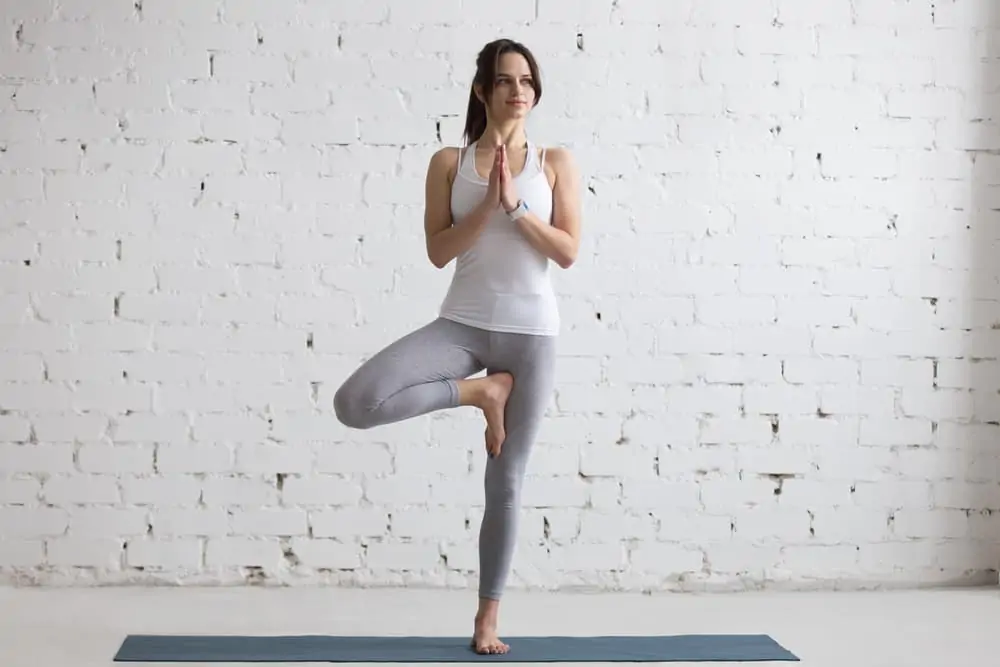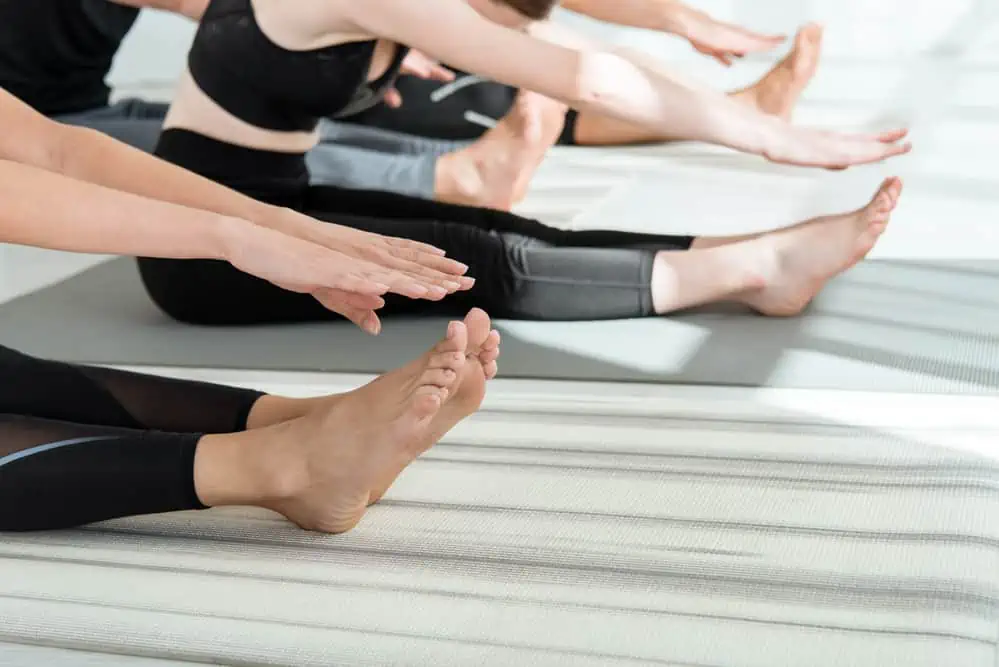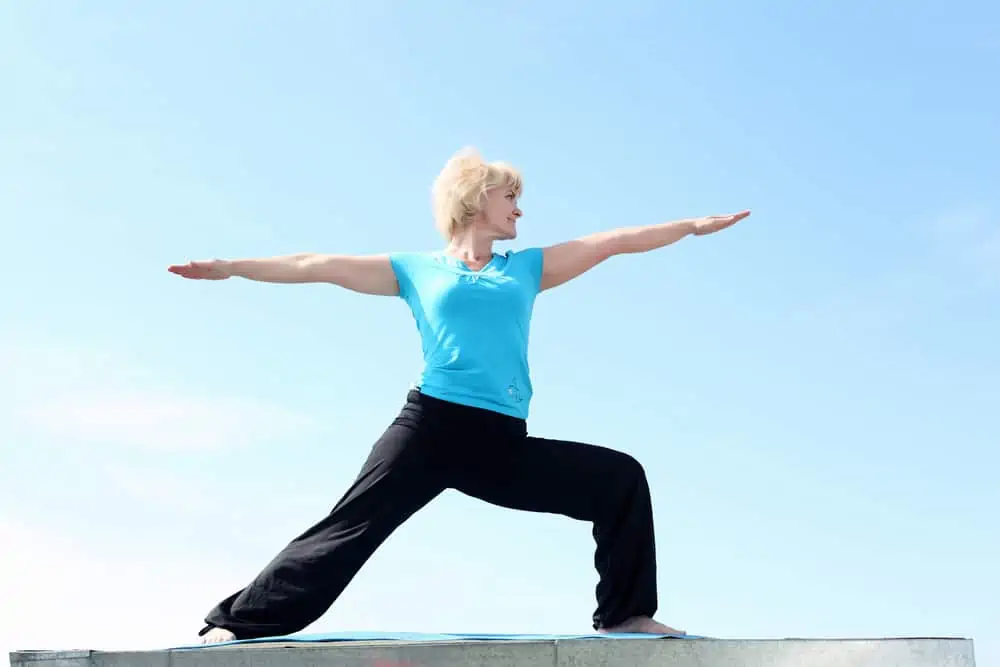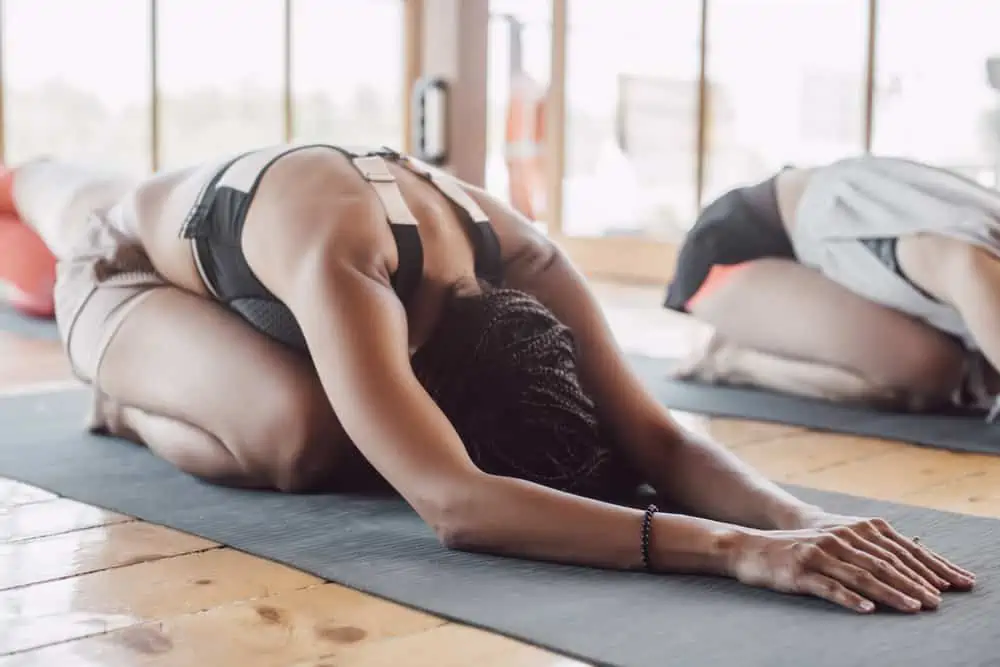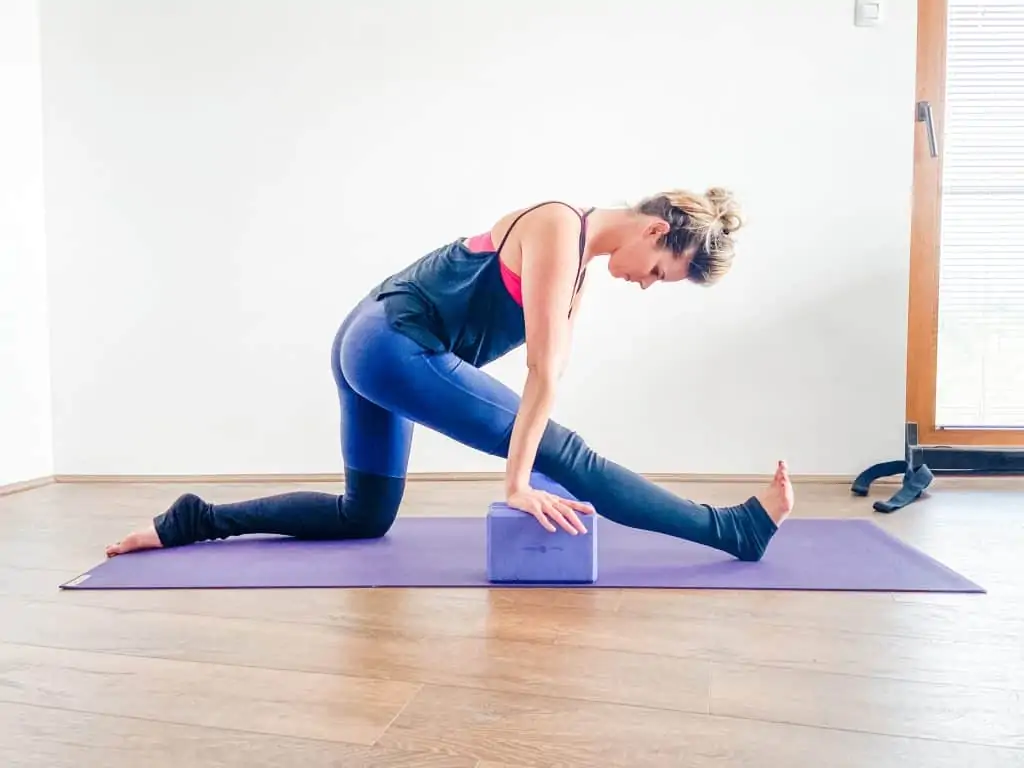This page contains affiliate links. I’m part of the lululemon collective and will receive a commission if you make a purchase through the links below. As an Amazon Associate, I earn from qualifying purchases. Read the full disclosure here.
Until your balance becomes an issue (like frequent falls or injuries), you probably never think about it.
But the reality is, it’s essential to work on balance just as you would strength and flexibility.
Balance training can help improve reaction times, athletic performance, increase mind/body connection, and decrease the risk for falls and injury.
For older adults, balance and physical activity become even more important as falls can spell devastating injuries that impact quality of life.
It’s much easier to maintain strength and balance throughout your life than try to get it back at a later date.
While you can always make some progress, an unfortunate reality is it will never get back to the level it could have been if maintained.
In this article, we’ll go over how yoga can help and ten yoga poses for balance to add to your routine.
*These exercises are not appropriate for those considered a fall risk. If you’re not sure if you’re considered a fall risk, see a physical therapist for an assessment. *
Disclaimer: This content is for educational purposes and is not medical advice. Read the full disclaimer.
Body systems responsible for balance
Many systems of the body work together to steady your balance.
Balance is controlled by the central nervous system utilizing feedback from your muscles and joints (what you feel), your visual system (what you see), and your vestibular system (your perceived movement in space by the inner ear).
Input from all of these systems is processed in the brain to adjust your movement accordingly.
As you can imagine, these adjustments need to happen quite quickly.
Injuries, fatigue, emotions, medications, or even a stuffy head from allergies or cold can affect how well these systems work.
How does yoga improve balance?
Improving balance is more than working on standing on one foot.
Strength, proprioception (your ability to feel your body in space via joints and soft tissues), and flexibility contribute to good balance. You can find these benefits in a variety of yoga poses and practices.
By improving strength and range of motion, you increase the functional mobility that your body has to work with. This essentially gives you more room for error to adjust and control your movements without tipping over.
Things become second nature as your body starts to trust you with new ranges and build motor patterns (sometimes known as muscle memory).
Yoga prioritizes listening to your body with mindfulness and awareness. This body awareness helps cue you into subtle sensations from proprioception to help your body adjust and react.
The more attuned you are to these subtle sensations, the better you can work with your body.
Yoga also helps improve focus and attention, which is vital for balance exercises.
What does the science say?
Several studies on yoga for balance, flexibility, mobility, and athletic performance have been done with various populations.
Polsgrove et al. concluded that yoga might increase flexibility, balance and enhance athletic performance after a 10-week study with male college athletes.
Youkhana S et al. conducted a systematic review of various research studies on yoga-based exercise on balance and mobility in people aged 60+.
This analysis found a slight improvement in balance and a medium improvement in physical mobility. However, the connection to a reduction in falls is unclear.
An important side note is that fall risk is also heavily related to overall safety awareness. Unfortunately, all the strengthening and balance work in the world is no match for poor safety awareness.
Other studies in healthy populations show a correlation between yoga and improved balance. However, study designs were not ideal, and balance is difficult to measure due to so many systems involved.
The bottom line is that staying active with a well-rounded repertoire of physical activity that includes balance exercise is essential to maximize mobility.
Yoga poses for balance and stability
What are the best yoga poses to work on balance? Here are ten poses to work into your routine.
All of these can be done near a wall or with a chair for extra safety as you progress. As you improve gradually, place less pressure through your fingertips until you feel comfortable.
If you have a thick or squishy yoga mat, it will make balancing a little more complicated.
Friendly safety disclaimer – *These exercises are not appropriate for those considered a fall risk.*
If you have a history of falls or are considered a fall risk, it’s best to practice balance exercises with the safety of a physical therapist. If you’re not sure if you’re considered a fall risk, see a physical therapist for an assessment.
Mountain pose (tadasana)
But this is just standing. What’s the big deal?
Remember, much of balance is listening to subtle cues the body is giving you.
Mountain pose is a great pose to do a body scan, notice how you feel, and how you’re distributing weight throughout the body.
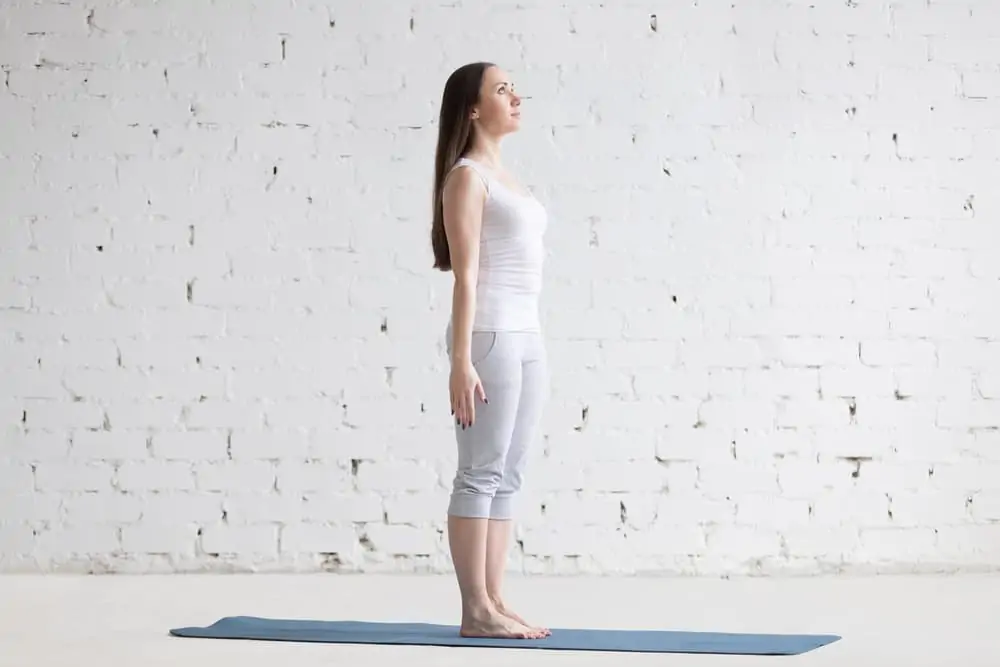
Things to look for as you’re body scanning
Body scanning is essentially taking stock of how you’re feeling throughout your entire body with focus and intention.
Here are some points to look at as you observe yourself in Mountain pose:
- In a standing position, press evenly through all four corners of the feet
- Micro-bend the knee to avoid locking the joints
- Keep a slight awareness of the core at the navel
- Find your neutral spine – avoid overarching or tucking the lumbar spine
- Bring the shoulders slightly back and stack over the hips
- Actively rotate the palms forward and stretch through the fingertips
- Align the head over the spine and lift tall through the crown
- Notice how you’re feeling in general today
- Connect to your breath and observe the air moving through the body as you inhale and exhale
High lunge (ashta chandrasana)
High lunge can challenge your balance due to the narrow base of support from side to side. The feet are about hip-width distance apart, and the weight is through the ball of the foot on the back leg.
This pose is also a strength challenge and increases with arm variations or twists.

Variations
- Keep hands down or at the heart center
- Increase your base of support by widening the distance between the feet from side to side
- Decrease the distance between the front and back foot
- Keep a bend in the back knee
- Use a chair or wall support
Tree pose (vrksasana)
Tree pose is a single-leg balance pose with options for every level. It’s essential to engage the standing leg and the lifted leg to form a firm base of support.
Check out this detailed video with options for everyone.
Variations
- Use a wall or chair for additional support
- Use your toe as a kickstand
- Adjust how high you bring your leg
- Avoid placing the foot directly on the knee joint
Chair pose (utkatasana)
Not exactly a balancing pose, but chair pose requires strength in the legs, especially the quadriceps muscles. Improving strength in these large muscles helps to improve overall balance.
Sit back (like you’re sitting in a chair) to activate the glutes and avoid letting the knees drift too far forward.
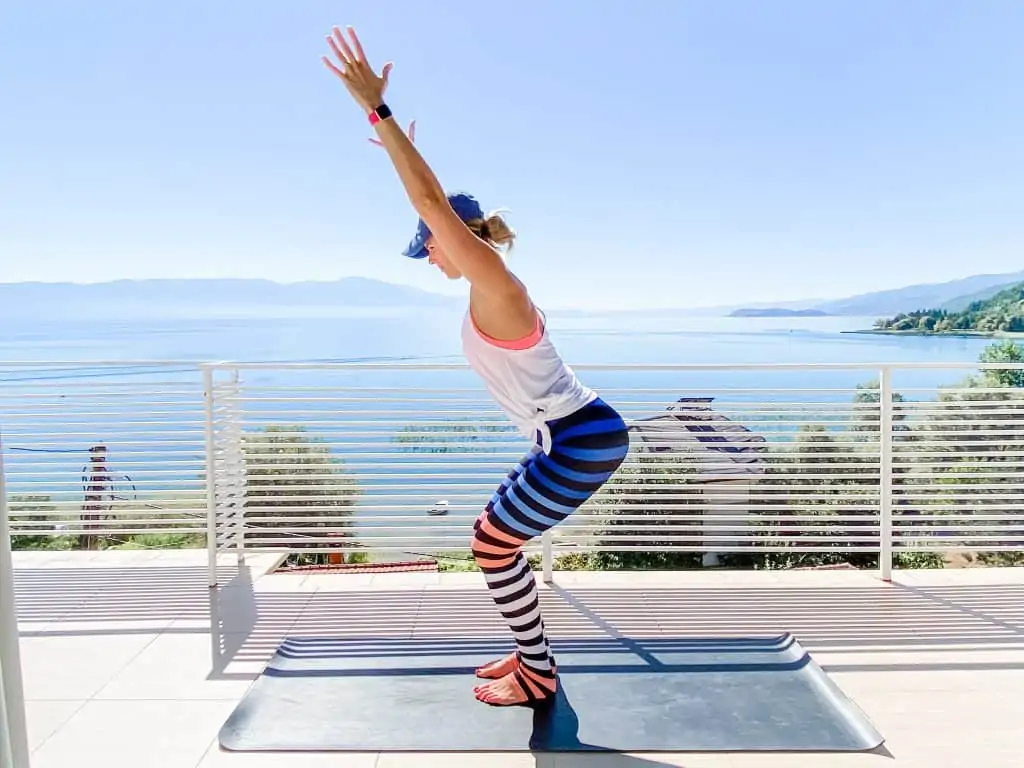
Variations
- Adjust your depth
- Adjust the distance between your feet
- Use a chair or wall for added support
- Arm variations such as reaching overhead can make the pose more challenging and activate more muscles in the back of the body.
Warrior 3 (virabhadrasana 3)
Warrior 3 is an intense combination of strength and balance.
Make sure to press evenly through all four corners of the foot to support the natural arch and balance your weight.
A slight bend in the knee helps to engage the major muscle groups.
The hips are neutral, so try to keep the pelvis level in this pose.
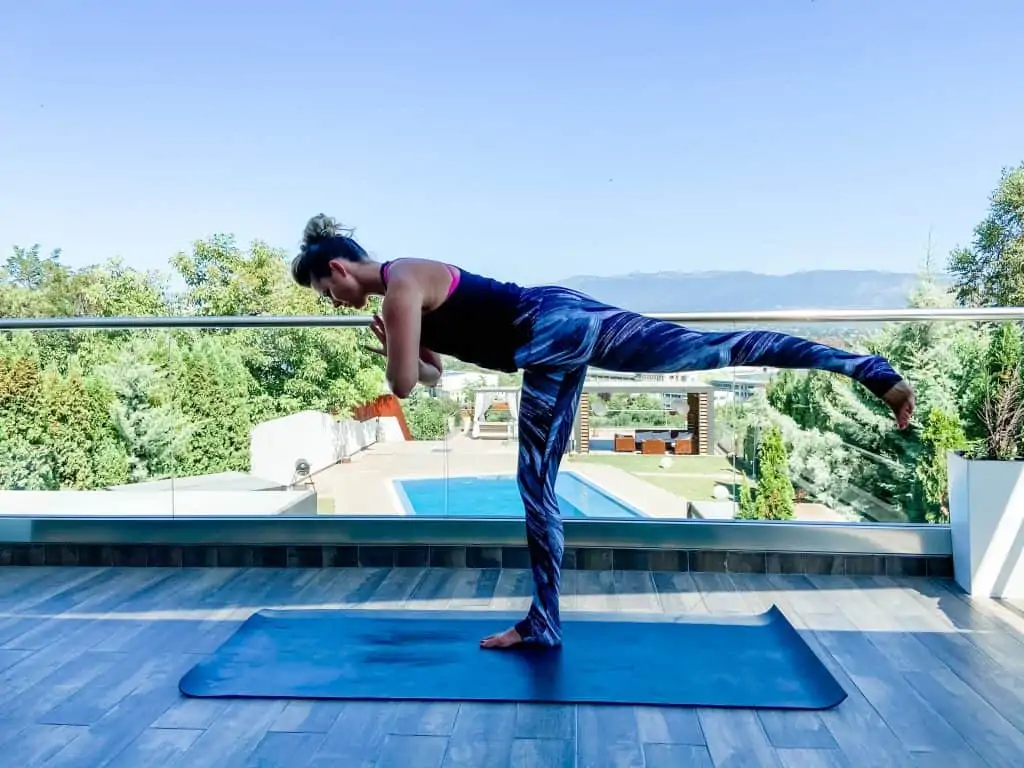
Variations
- Adjust how high you lift the back leg
- Try different arm variations for added challenge
- Use a chair or wall to push back into with your hands for more sensation and balance assistance. Pushing into a surface with your upper body activates more muscles and doesn’t make the pose “easier” just because you’re holding on.
Warrior 2 (virabhadrasana 2)
Warrior 2 gets challenging in a hurry as you sink into this pose and challenge your quad strength on the front leg.
Keeping the front knee aligned over the ankle helps to protect the joint from awkward twisting stress.
Balance becomes more challenging or accessible with variations in distance between the feet or alignment between the front and back.

Variations
- Adjust your depth
- Adjust the distance between the feet both front to back and side to side
- Try different arm variations
- Use a chair or wall for added support
Half-moon (ardha chandrasana)
Combining balance and strength makes half-moon pose one of the most challenging balance poses in many yoga classes.
In half-moon, the front hip is in external rotation, and the front of the body is turned toward the long edge of the mat.
Though it seems complicated, there are a lot of variations to work into this pose.
Try placing the block or chair about one foot in front and slightly outside the front foot.
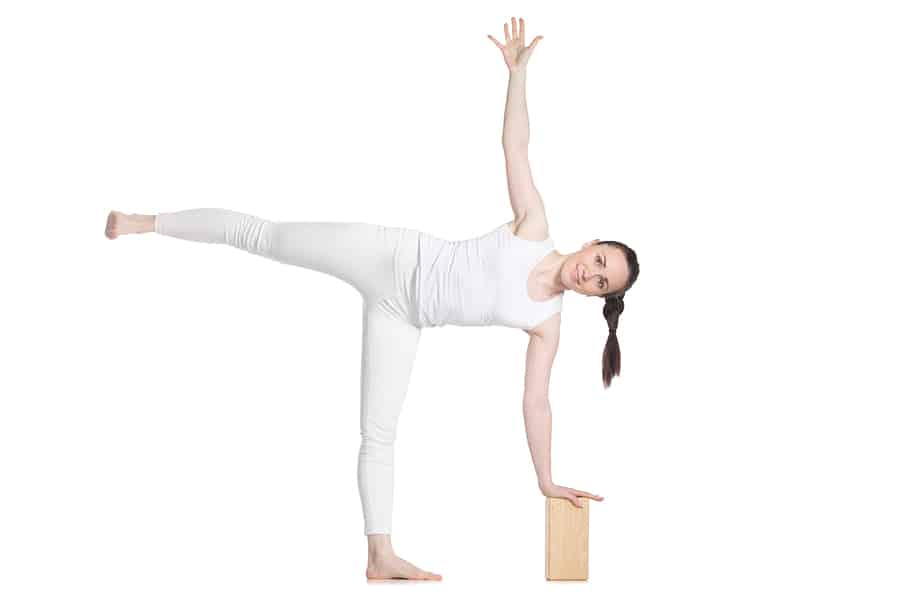
Variations
- Use a wall, chair, or block to support yourself
- Adjust your prop placement
- Adjust how far you lift the back leg and tilt the upper body down
Reverse warrior (viparita virabhadrasana)
Reverse warrior can be a balance challenge because your visual component is somewhat removed. As you look up, you can no longer keep the mat or your alignment in your periphery.
Keep knee alignment in mind as you take your gaze up.
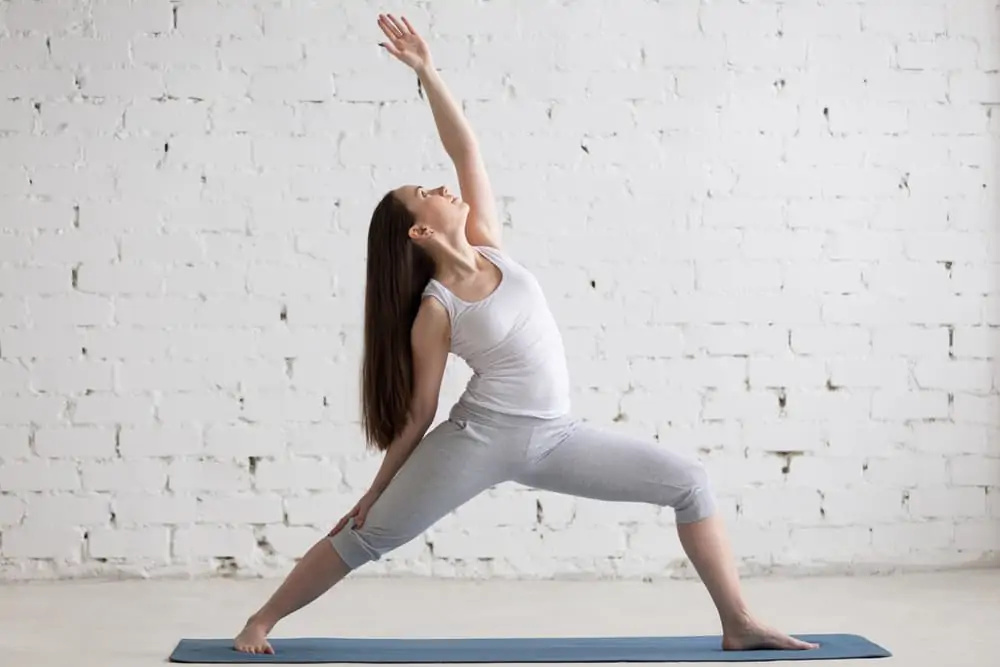
Variations
- Reach up but keep your gaze down to maintain some visual contact with the mat
- Use a chair or wall alongside the pose for added stability
- Adjust the distance between beet for a more stable base of support
Eagle (garudasana)
Eagle has a variation for every level, starting with the kickstand version, just like tree.
You can get as complicated as you’d like with arm variations in this challenging standing pose.
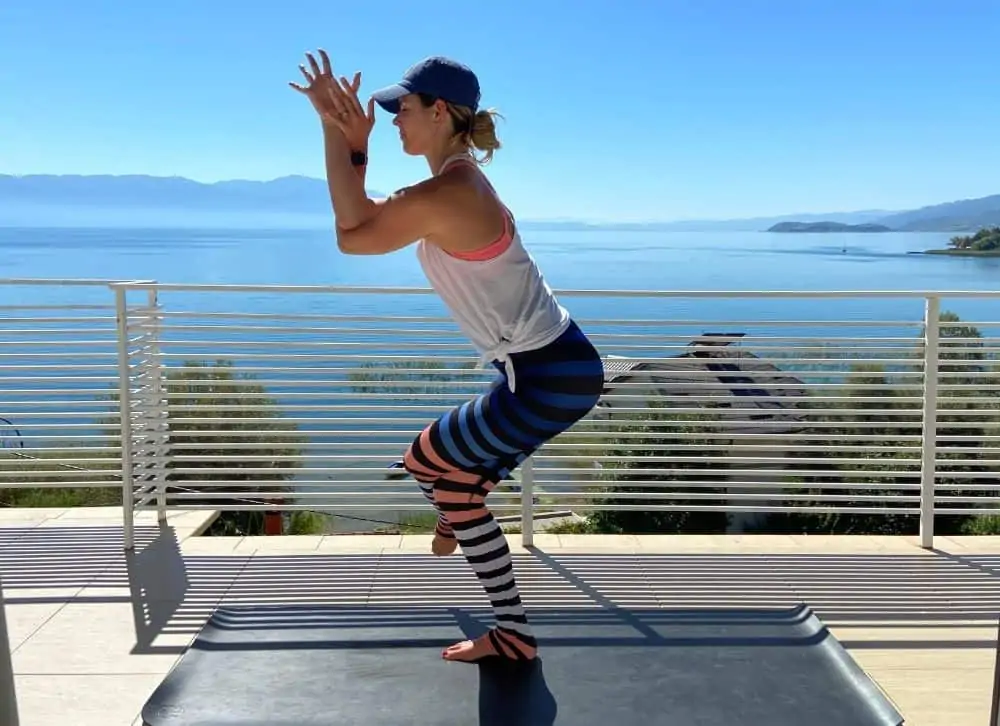
Variations
- Use a wall or chair for added support
- Keep your toe on the ground as a kickstand
- Keep hands at heart center
Standing pigeon (tadakapotasana)
Standing pigeon (standing figure 4) is similar to eagle in terms of balance challenge. However, in this pose, you get the added benefit of stretching your hip muscles into external rotation.
Eagle is a bit easier if hip rotation is limited.
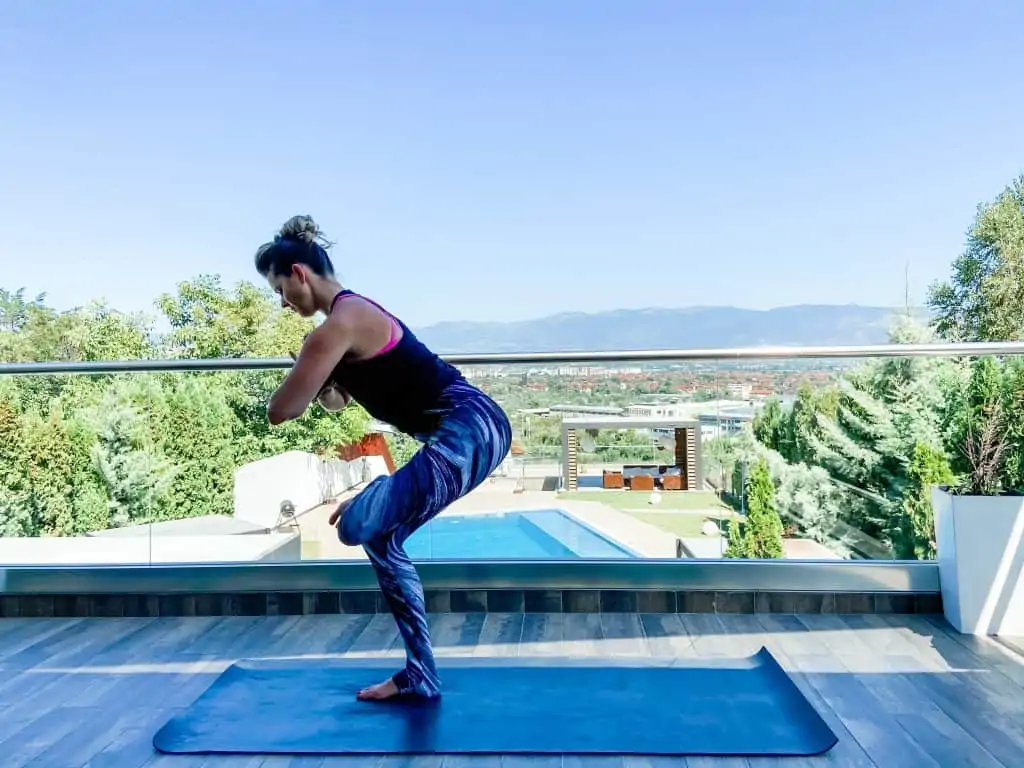
Variations
- Use hands for support on a wall or chair
- If the hip rotation is too intense, substitute with eagle and use the kickstand option
Yoga for balance practice
Ready to try some of these poses in action?
Try my yoga for balance practice on YouTube.
Wrapping up
It’s important to focus on balance just as you would strength, mobility, and flexibility and not just assume it will be there on its own.
Improving your balance can help enhance your mind-body connection. Practicing yoga is another way to work on your balance.
Try incorporating these poses into your yoga practice.
Let me know which ones are your favorite!
References
Polsgrove MJ, Eggleston BM, Lockyer RJ. Impact of 10-weeks of yoga practice on flexibility and balance of college athletes. Int J Yoga. 2016;9(1):27-34. doi:10.4103/0973-6131.171710
Sabrina Youkhana, Catherine M. Dean, Moa Wolff, Catherine Sherrington, Anne Tiedemann, Yoga-based exercise improves balance and mobility in people aged 60 and over: a systematic review and meta-analysis, Age and Ageing, Volume 45, Issue 1, January 2016, Pages 21-29, https://doi.org/10.1093/ageing/afv175
Jeter PE, Nkodo AF, Moonaz SH, Dagnelie G. A systematic review of yoga for balance in a healthy population. J Altern Complement Med. 2014;20(4):221-232. doi:10.1089/acm.2013.0378
Thomas E, Battaglia G, Patti A, et al. Physical activity programs for balance and fall prevention in elderly: A systematic review. Medicine (Baltimore). 2019;98(27):e16218. doi:10.1097/MD.0000000000016218
Sanskrit pose names referenced from Tummee.com teacher sequencing.

